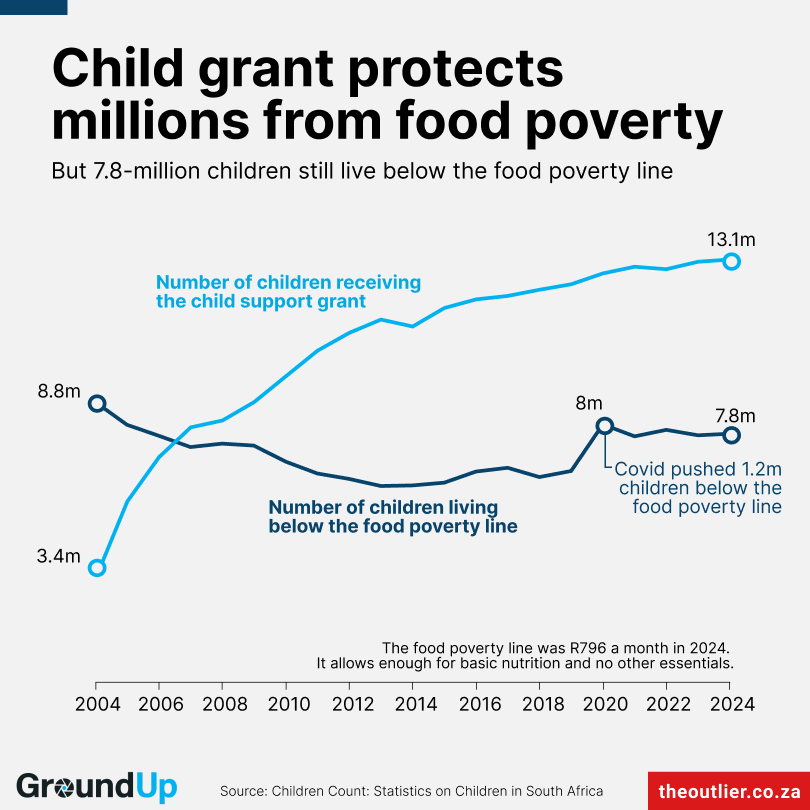Assessing infrastructure readiness for scaling digital cash transfers toward ending poverty – Brookings

Executive Summary
In response to stalled global progress towards Sustainable Development Goal 1 (SDG 1), No Poverty, Unconditional Digital Cash Transfers (DCTs) have emerged as a critical intervention. A proposal for a global fund to scale up DCTs, provisionally titled the Digital Fund for Ending Extreme Poverty (D-FEEP), aims to reinvigorate efforts to meet the 2030 target of eradicating extreme poverty. This report presents a benchmark analysis of the digital infrastructure readiness in 72 countries with significant levels of extreme poverty. The findings indicate that the necessary infrastructure and policy preconditions are increasingly in place, offering a viable pathway for rapidly scaling DCTs. This analysis suggests cautious optimism that a concerted, technology-driven effort can make decisive progress on SDG 1.
Introduction: Aligning Digital Finance with Sustainable Development Goal 1
The international community’s commitment to ending extreme poverty by 2030, enshrined as Target 1.1 of the Sustainable Development Goals, faces significant challenges, with approximately 600 million people still living in extreme poverty. Amid these disruptions, new technologies offer pathways to accelerate progress. A substantial body of evidence demonstrates that DCTs are highly effective in alleviating multiple dimensions of poverty, directly contributing to SDG 1. The proposed D-FEEP represents a strategic partnership, aligning with SDG 17 (Partnerships for the Goals), to mobilize resources and support the dramatic expansion of DCTs. This report assesses the foundational readiness of nations to implement such programs, focusing on the critical role of Digital Public Infrastructure (DPI).
The Role of Digital Public Infrastructure in Achieving the SDGs
The successful scale-up of DCTs is contingent upon robust national infrastructure, particularly Digital Public Infrastructure (DPI). DPI, a publicly governed backbone for digital services, is a key enabler for several SDGs.
Core Components of DPI for DCTs
Effective DCT implementation requires at least four infrastructural and policy preconditions, which are foundational to achieving broader development goals:
- A digital identification (ID) system: Essential for providing legal identity for all, a target under SDG 16 (Peace, Justice and Strong Institutions).
- A digital payment system: Crucial for financial inclusion and building resilient infrastructure under SDG 9 (Industry, Innovation and Infrastructure).
- A mechanism for identifying beneficiaries: Ensures that poverty reduction efforts effectively reach the most vulnerable, aligning with the core principle of “leaving no one behind.”
- Strategies for beneficiary enrollment: The operational component that connects vulnerable populations to social safety nets.
The development of DPI offers a systemic approach, contrasting with fragmented, project-specific digital solutions. A robust DPI framework can support not only DCTs for SDG 1 but also a wide range of public and private services, accelerating progress across the entire 2030 Agenda.
Methodology: Assessing National Readiness for Digital Cash Transfers
To evaluate the feasibility of a global DCT scale-up, this analysis assesses the digital infrastructure status of 72 countries where the extreme poverty rate exceeds 3%. This provides a data-driven foundation for strategic planning and investment aligned with SDG 17.
Data Sources and Country Sample
The assessment utilizes the March 2025 edition of the global DPI Map from University College London, which provides systematic data on country-level digital ID and payment systems. This is cross-referenced with poverty data from the World Bank’s World Development Indicators. The sample focuses on 59 countries eligible for the World Bank’s International Development Association (IDA) financing, as this group accounts for approximately 550 million people in extreme poverty and represents the most likely initial partners for a D-FEEP initiative.
Categorization of Digital Infrastructure Readiness
Countries are segmented into three categories based on their DPI maturity, providing a clear overview of the global landscape:
- DPI in Motion: Countries with a DPI-caliber ID and real-time payment system operating at or scaling to a national level.
- DPI in Pilot or Planning: Countries with partially developed DPI systems, including those in pilot or planning phases.
- Digital Infrastructure to be Built: Countries with no or unknown evidence of foundational digital ID or payment systems.
Findings: Global Landscape of Digital Infrastructure for Poverty Eradication
The analysis reveals a promising landscape for scaling DCTs to achieve SDG 1. A significant number of IDA-eligible countries, home to the majority of the world’s extremely poor, have already established key elements of the necessary digital infrastructure.
Category 1: DPI in Motion
Nine IDA-eligible countries, home to approximately 205 million people in extreme poverty, have advanced digital infrastructure. These nations represent immediate opportunities for scaling up DCTs.
- Countries include: Bangladesh, Ethiopia, Ghana, Nigeria, Pakistan, Rwanda, Uganda, Tanzania, and Zambia.
- All nine countries in this category also have recent policy experience with Unconditional Cash Transfers (UCTs), indicating both infrastructural and political readiness.
Category 2: DPI in Pilot or Planning
Thirty-eight IDA-eligible countries, with a combined population of 204 million in extreme poverty, are actively developing their DPI. This group represents a major opportunity for targeted investment and technical assistance to accelerate their readiness for DCTs.
- This category includes countries like Kenya, Madagascar, Mozambique, and Togo, whose successful Novissi program demonstrates that rapid DCT deployment is possible even before full DPI maturity.
- A majority of these countries have recent UCT experience, suggesting policy alignment with SDG 1 objectives.
Category 3: Digital Infrastructure to be Built
Twelve IDA-eligible countries, with approximately 140 million people in extreme poverty, require foundational investments in digital infrastructure.
- Countries include: DR Congo, Chad, South Sudan, and Yemen.
- Targeted support in these nations is critical to ensure no one is left behind in the global push to achieve SDG 1.
Analysis and Implications for SDG Achievement
The findings offer strategic insights for policymakers and development partners aiming to leverage DCTs for the 2030 Agenda.
Leveraging Existing Infrastructure for SDG 1
The 47 IDA-eligible countries with DPI either in motion or in planning are home to over 400 million people in extreme poverty. These nations are prime candidates for rapid DCT expansion. However, as the case of Togo illustrates, full DPI maturity may not be a strict precondition for success. Flexible, context-specific approaches will be essential.
Addressing Gaps to Ensure Inclusive Growth (SDG 10)
A primary challenge is ensuring that digital systems reach the most vulnerable populations, a key tenet of SDG 10 (Reduced Inequalities). Even in countries with “DPI in motion,” such as Nigeria, significant gaps in digital ID penetration and financial access can hinder the reach of DCT programs. A critical path to success involves prioritizing nationwide access to digital ID and payment systems to ensure that DCTs can effectively target and reach all individuals living in extreme poverty.
The Role of Political Will and Partnerships (SDG 16 & 17)
Technology and infrastructure alone are insufficient. The implementation of UCTs requires political support and a social contract conducive to direct grants for the poor, reflecting strong and accountable institutions (SDG 16). The proposed D-FEEP must operate on a partnership model (SDG 17), supporting countries that demonstrate political commitment. The widespread experience with UCT programs suggests that this commitment exists in many nations.
Conclusion: A Pathway to Eradicating Extreme Poverty by 2030
This analysis provides grounds for cautious optimism that the global goal of ending extreme poverty is within reach. The convergence of evolving digital technologies (SDG 9), growing policy experience, and a renewed focus on targeted international cooperation (SDG 17) creates a powerful opportunity. By strategically investing in and leveraging Digital Public Infrastructure, the international community can empower Digital Cash Transfers to unlock decisive gains, accelerating the world’s otherwise-stalled progress toward achieving SDG 1 by 2030.
SDGs Addressed in the Article
SDG 1: No Poverty
- The article’s central theme is the eradication of extreme poverty through digital cash transfers (DCTs). It explicitly states that the goal is “ending extreme poverty” and directly references “Target 1.1 of the Sustainable Development Goals.” The text highlights that “around 600 million people still in extreme poverty” and discusses a proposed “global fund to scale up DCTs” for this purpose. It also mentions social protection systems like “unconditional cash transfer programs” and Nigeria’s “National Social Safety Nets Project.”
SDG 9: Industry, Innovation, and Infrastructure
- The article heavily emphasizes the critical role of infrastructure, specifically “digital public infrastructure (DPI),” as a precondition for successfully scaling up DCTs. It details the necessary components, including “a digital identification (ID) system” and “a digital payment system.” The analysis categorizes countries based on their “digital infrastructure readiness,” demonstrating a clear link to building resilient and accessible infrastructure to support development goals.
SDG 17: Partnerships for the Goals
- The article discusses a multi-stakeholder, international effort to combat poverty. The proposal for a “new purpose-driven international fund” (D-FEEP) exemplifies a global partnership. It mentions mobilizing resources from “global aid budgets” and the need for these funds to be “matched by domestic resources.” The entire initiative, involving the World Bank, the 17 Rooms initiative, and national governments, is a clear example of partnership for sustainable development.
Specific SDG Targets Identified
-
SDG 1: No Poverty
- Target 1.1: By 2030, eradicate extreme poverty for all people everywhere.
- Explanation: The article explicitly mentions this target: “all 193 UN member states affirmed the same ambition as Target 1.1 of the Sustainable Development Goals.” The entire analysis focuses on strategies to achieve this, using a poverty line of “$2.15 per day” to define the population in need.
- Target 1.3: Implement nationally appropriate social protection systems and measures for all… and by 2030 achieve substantial coverage of the poor and the vulnerable.
- Explanation: The article’s focus on “unconditional cash transfers” and “social safety nets” directly relates to this target. It discusses the implementation of these systems, such as “Togo’s Novissi program” and Nigeria’s “National Social Safety Nets Project,” and assesses countries based on their “recent experience in implementing some form of unconditional cash transfer (UCT) programs.”
- Target 1.a: Ensure significant mobilization of resources from a variety of sources, including through enhanced development cooperation… to implement programmes and policies to end poverty.
- Explanation: The proposal for a “Digital Fund for Ending Extreme Poverty (D-FEEP)” with a suggested scale of “$6-7 billion per year” is a direct example of mobilizing resources through development cooperation. The article also mentions financing through the “World Bank’s International Development Association (IDA)” and the need for international funds to be “matched by domestic resources.”
- Target 1.1: By 2030, eradicate extreme poverty for all people everywhere.
-
SDG 9: Industry, Innovation, and Infrastructure
- Target 9.1: Develop quality, reliable, sustainable and resilient infrastructure… with a focus on affordable and equitable access for all.
- Explanation: The article is centered on the need for “digital public infrastructure (DPI)” as the “country-level backbone for digital identification (ID), payments, and data exchange.” It assesses countries’ readiness based on this infrastructure, highlighting the goal of enabling services for all, particularly the poor.
- Target 9.c: Significantly increase access to information and communications technology and strive to provide universal and affordable access to the Internet.
- Explanation: The success of DCTs is contingent on access to technology. The article discusses the need for “nationwide access to digital infrastructure,” the importance of “contactless mobile money,” and the challenge of reaching the poor due to a “lack of penetration of national digital ID efforts.” It implicitly advocates for increasing access to these technologies to make the poverty reduction programs effective.
- Target 9.1: Develop quality, reliable, sustainable and resilient infrastructure… with a focus on affordable and equitable access for all.
-
SDG 17: Partnerships for the Goals
- Target 17.9: Enhance international support for implementing effective and targeted capacity-building in developing countries to support national plans to implement all the Sustainable Development Goals.
- Explanation: The proposed D-FEEP fund is designed to provide this kind of support. The article poses the question of whether the fund should “help countries build DPI to deliver DCTs,” which is a form of targeted capacity-building to support national plans for poverty eradication (SDG 1) through better infrastructure (SDG 9).
- Target 17.9: Enhance international support for implementing effective and targeted capacity-building in developing countries to support national plans to implement all the Sustainable Development Goals.
Indicators for Measuring Progress
- For Target 1.1 (Eradicate extreme poverty):
- Indicator: Proportion of the population living below the international poverty line.
- Explanation: The article explicitly uses this indicator, defining extreme poverty as “at least 3% of the population living on less than $2.15 per day.” It also provides absolute numbers, stating there are “around 600 million people still in extreme poverty.”
- Indicator: Proportion of the population living below the international poverty line.
- For Target 1.3 (Implement social protection systems):
- Indicator: Proportion of the population covered by social protection systems/programs.
- Explanation: The article implies this indicator by assessing whether countries have “unconditional transfers reaching at least 0.5% of the population” and by citing the coverage of Nigeria’s program, which has “reportedly reached 5 million households and is aiming to reach 10 million households.”
- Indicator: Proportion of the population covered by social protection systems/programs.
- For Target 9.1/9.c (Develop infrastructure and increase access to ICT):
- Indicator: Status of national digital public infrastructure (ID and payment systems).
- Explanation: The article creates a framework to measure this, categorizing countries into “DPI in motion,” “DPI in pilot or planning,” and “Digital infrastructure to be built.” This serves as a direct indicator of infrastructure readiness.
- Indicator: Proportion of the population without access to digital ID or payment systems.
- Explanation: The article identifies this as a critical data gap and an implied indicator for progress, noting the need to assess “how many people in extreme poverty within each country still lack access to digital IDs or payment systems.”
- Indicator: Status of national digital public infrastructure (ID and payment systems).
- For Target 1.a (Mobilize resources):
- Indicator: Volume of financial resources mobilized for poverty reduction programs.
- Explanation: The article provides a specific financial target for the proposed fund: “$6-7 billion per year for ten years,” which serves as a clear indicator of resource mobilization.
- Indicator: Volume of financial resources mobilized for poverty reduction programs.
SDGs, Targets, and Indicators Analysis
| SDGs | Targets | Indicators Identified in the Article |
|---|---|---|
| SDG 1: No Poverty |
1.1: Eradicate extreme poverty for all people everywhere.
1.3: Implement nationally appropriate social protection systems. 1.a: Ensure significant mobilization of resources. |
Proportion of population living on less than $2.15 per day.
Proportion of population covered by unconditional cash transfer programs (e.g., reaching at least 0.5% of the population). Volume of financial resources mobilized for a global fund (e.g., “$6-7 billion per year”). |
| SDG 9: Industry, Innovation, and Infrastructure |
9.1: Develop quality, reliable, sustainable and resilient infrastructure.
9.c: Significantly increase access to information and communications technology. |
Categorization of country-level digital infrastructure readiness (“DPI in motion,” “DPI in pilot or planning,” etc.).
Coverage gaps in access to digital IDs and payment systems among the extremely poor. |
| SDG 17: Partnerships for the Goals | 17.9: Enhance international support for implementing effective and targeted capacity-building. | Establishment of international funds (like D-FEEP) to support national plans and help countries build digital public infrastructure. |
Source: brookings.edu

What is Your Reaction?
 Like
0
Like
0
 Dislike
0
Dislike
0
 Love
0
Love
0
 Funny
0
Funny
0
 Angry
0
Angry
0
 Sad
0
Sad
0
 Wow
0
Wow
0













































































